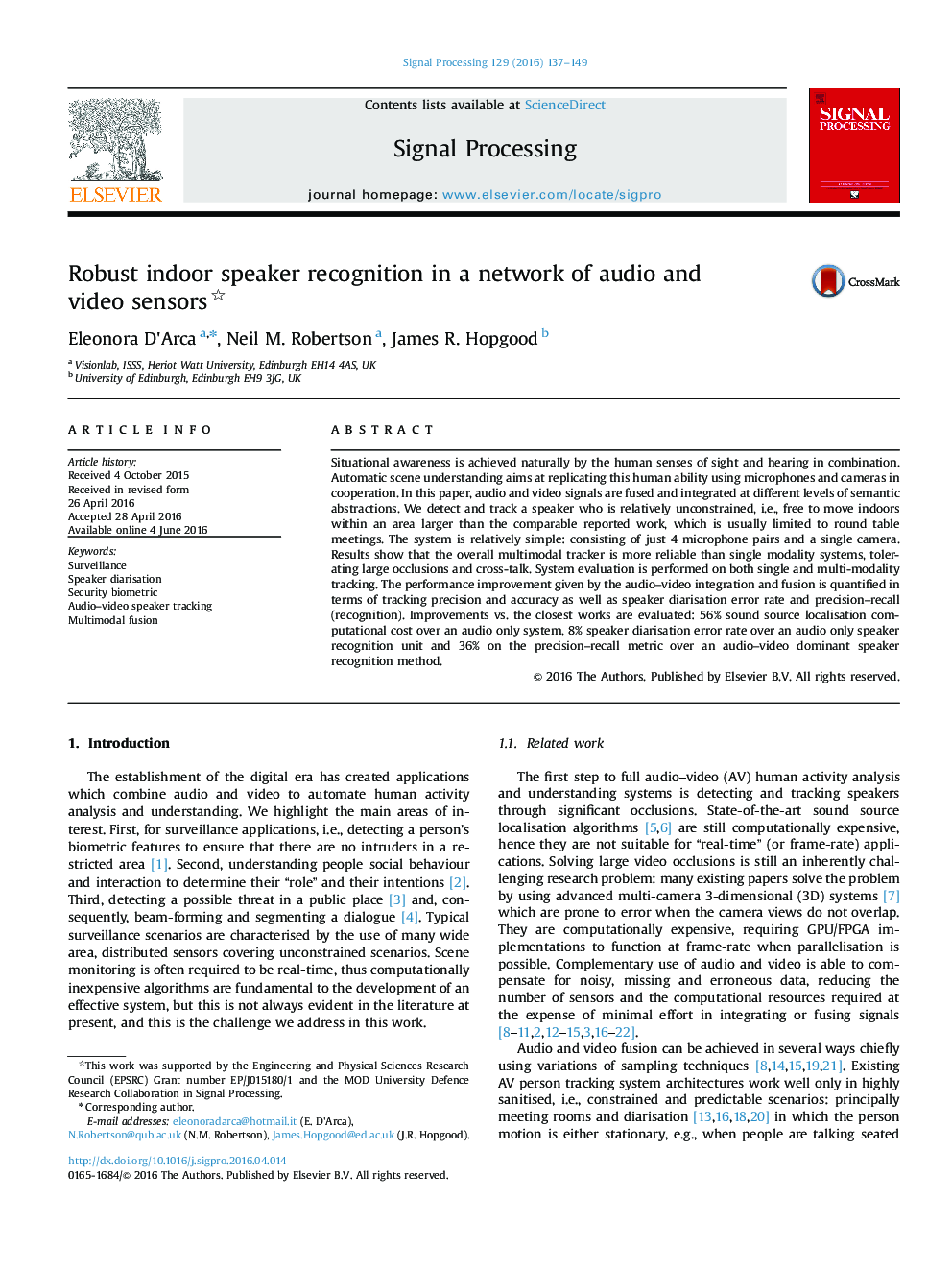| Article ID | Journal | Published Year | Pages | File Type |
|---|---|---|---|---|
| 6958227 | Signal Processing | 2016 | 13 Pages |
Abstract
Situational awareness is achieved naturally by the human senses of sight and hearing in combination. Automatic scene understanding aims at replicating this human ability using microphones and cameras in cooperation. In this paper, audio and video signals are fused and integrated at different levels of semantic abstractions. We detect and track a speaker who is relatively unconstrained, i.e., free to move indoors within an area larger than the comparable reported work, which is usually limited to round table meetings. The system is relatively simple: consisting of just 4 microphone pairs and a single camera. Results show that the overall multimodal tracker is more reliable than single modality systems, tolerating large occlusions and cross-talk. System evaluation is performed on both single and multi-modality tracking. The performance improvement given by the audio-video integration and fusion is quantified in terms of tracking precision and accuracy as well as speaker diarisation error rate and precision-recall (recognition). Improvements vs. the closest works are evaluated: 56% sound source localisation computational cost over an audio only system, 8% speaker diarisation error rate over an audio only speaker recognition unit and 36% on the precision-recall metric over an audio-video dominant speaker recognition method.
Keywords
Related Topics
Physical Sciences and Engineering
Computer Science
Signal Processing
Authors
Eleonora D'Arca, Neil M. Robertson, James R. Hopgood,
